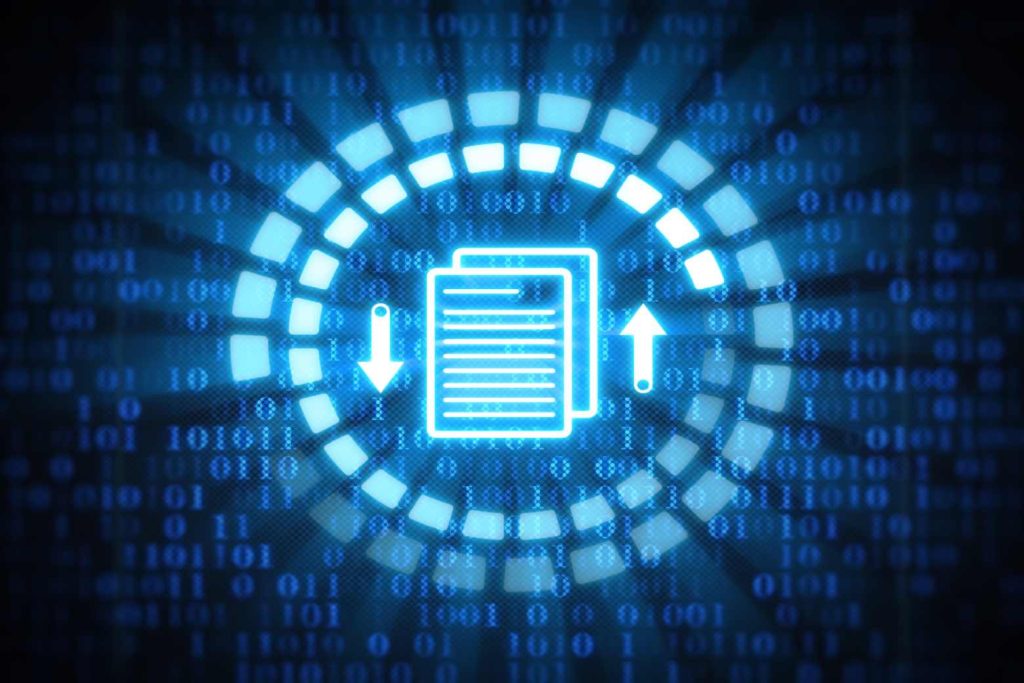Have you ever found yourself concerned about the safety and security of your digital assets? You must know that the digital realm is home to many valuable assets. But it’s crucial to ensure their protection. In this blog, we will delve into digital asset security. Furthermore, we will also learn the importance of a secure website to upload files. At the same time, we will learn to achieve a secure website file upload system.
We understand the anxiety that comes with sharing sensitive files online. But fear not, for we have curated an extensive guide to help you with secure website file upload. Firstly, we will explore the common risks and threats to digital assets. Hence, shedding light on the vulnerabilities that may compromise their integrity. Moreover, we will also discuss both server-side and client-side security measures.
Additionally, we’ll emphasize the importance of a secure and user-friendly interface. It will help to ensure a seamless and protected experience for users. We will recognize the significance of logging, auditing, and monitoring file uploads. These practices are vital in detecting and responding to potential security incidents.
Lastly, we will emphasize the importance of ongoing maintenance and updating security measures. It will help to keep your file upload system resilient and up to date. Let’s begin our journey.
What are digital assets?
Digital assets are valuable information or resources stored in a digital format. They encompass various types, such as documents, images, videos, audio files, and more. These assets hold immense importance, representing personal, professional, and financial value. Safeguarding them is crucial to protect our digital lives.
What are the common risks and threats to digital assets?
Let’s explore some of the most prevalent dangers:
- One of the primary concerns is “unauthorized” individuals gaining access to your files. Hackers may exploit vulnerabilities in your website or network infrastructure. Hence, compromising the confidentiality and integrity of your digital assets.
- Data breaches occur when someone accesses, steals, or leaks sensitive information. This can result in identity theft, financial loss, or reputational damage.
- Malicious software, such as viruses, ransomware, and spyware, can infect your devices. Hence, it can compromise your digital assets.
- Not all threats come from external sources. Insider threats involve employees, contractors, or anyone with authorized access. It can lead to misusing their privileges to steal or manipulate data.
- Accidental deletion, hardware failure, and natural disasters can also result in permanent data loss.
What is the importance of a secure and reliable website architecture?
The importance of a secure and reliable website architecture lies in its ability to protect digital assets. Hence, it will help us ensure a safe user experience. It is important to shed light on server-side and client-side architecture security. Let’s explore them.
Server-side security measures
Authentication and authorization mechanisms
Robust authentication ensures that only authorized users can access sensitive data. On the other hand, authorization mechanisms control the level of access granted to each user.
Secure storage of files
Implementing encryption and access controls for stored files prevents unauthorized access and protects against data breaches.
Role-based access controls
Role-based access controls limit access to files. It works based on predefined roles and responsibilities. Hence, minimizing the risk of unauthorized data exposure.
Client-side security measures
Secure connection protocols (e.g., HTTPS)
HTTPS ensures secure communication between the website and users. Hence, encrypting data transmission and preventing eavesdropping or tampering.
Input validation and sanitization
Websites can prevent common vulnerabilities like SQL injections and cross-site scripting. It is possible by validating and sanitizing user inputs. Hence, safeguarding against data manipulation and unauthorized access.
Secure file transmission
Secure protocols such as SFTP or encrypted connections protect files during transmission. Hence, reducing the risk of interception or unauthorized access.

What is a secure file upload process?
A secure file upload process is crucial for protecting digital assets during the transfer and storage phases. It involves various components that work together to ensure the integrity and confidentiality of uploaded files. Let’s delve into the details:
User authentication and authorization
- By requiring users to register and log in, the system can verify their identity and control access to the file upload functionality.
- Assigning specific roles and permissions to users ensures that only authorized individuals can upload files.
Input validation and sanitization
- Verifying the file types and extensions prevents the uploading of potentially malicious files that could pose security risks.
- Enforcing limits on file sizes helps prevent abuse of the system. Hence, reducing potential denial-of-service attacks.
- Conducting malware scans on uploaded files helps detect and mitigate any potential threats to the system.
Secure file storage
- Encrypting files while they are stored on the server adds a layer of protection. Hence, ensuring their contents remain secure even if the files are accessed.
- Access controls, data separation, and other security measures within the storage infrastructure further safeguard the files from unauthorized access.
Transmission security
- Utilizing secure file transfer protocols like SFTP or FTPS ensures that file transmission occurs securely over the network.
- Encrypting the files during transit protects them from interception or eavesdropping by unauthorized entities.
- Verifying the integrity of files during transfer using techniques like hashing helps detect any tampering or corruption of the uploaded files.
How to handle and process uploaded files?
Handling and processing uploaded files securely is crucial to protect digital assets. It involves proper user input validation, data sanitization, and scanning for malware. Moreover, it also allows the encryption of files at rest and during transmission and integrity checks. Additionally, secure file storage, retrieval, backups, and disaster recovery mechanisms are essential components to ensure data integrity and availability.
What is the importance of a secure and user-friendly interface?
A secure and user-friendly interface is vital for a seamless file upload experience. It ensures that users can easily navigate and interact with the system while maintaining a safe environment. Moreover, providing clear instructions, feedback for successful uploads, informative error messages, and progress indicators enhances usability and user satisfaction while still prioritizing security.
What is logging, auditing, and monitoring of file uploads?
Logging, auditing, and monitoring file uploads are essential components of a comprehensive security program.
Secure logging ensures that relevant information about file uploads is recorded for analysis and investigation.
Auditing involves reviewing these logs to detect any suspicious activities or policy violations. Regular security audits, vulnerability assessments, and penetration testing help identify and address potential weaknesses in the system. Hence, ensuring ongoing protection for uploaded files.
Continuous monitoring ensures the timely detection of security incidents and allows for swift response and mitigation actions. These practices enhance the overall security posture of the file upload system. Moreover, it can also help maintain the integrity and confidentiality of digital assets.
What is the importance of ongoing maintenance and updating security measures for any file upload system?
Ongoing maintenance and updating of security measures are crucial for any file upload system. Regular security updates and patches ensure the system is fortified against newly discovered vulnerabilities. Security testing and vulnerability assessments help identify and address potential weaknesses. Incident response and mitigation plans enable swift action in a security breach.
Conclusion
In a digital world of risks and threats, safeguarding your digital assets becomes paramount. This blog has explored the importance of a secure website architecture for uploading files. Hence, covering a range of crucial security measures. From server-side protection to client-side security, we’ve discussed multiple security measures.
We’ve highlighted the significance of a secure and user-friendly interface, logging and monitoring of file uploads. Moreover, we also highlighted the importance of ongoing maintenance and updating security measures. Therefore, you can fortify your digital assets, protect sensitive information, and ensure peace of mind.
Embrace the power of secure website architecture and create a safe haven for your files in the ever-evolving digital landscape. Your digital assets deserve nothing less than the highest level of protection.

FAQs
How can I upload files online for free?
Several free online platforms are available for file uploads, such as Filestack, Google Drive, Dropbox, and WeTransfer.
Where can I upload a 20 GB file?
There are various file hosting services like Google Drive, Dropbox, and WeTransfer that allow uploading large files up to 20 GB.
How do I create a website and upload files?
You can implement an API such as Filestack inside your website. It will help you upload files easily.
What are the best upload sites for large files?
Filestack is one of the most reliable sites for large file uploads.
Also Read: Data Protection In The Home Office – How To Protect Yourself From Dangers
